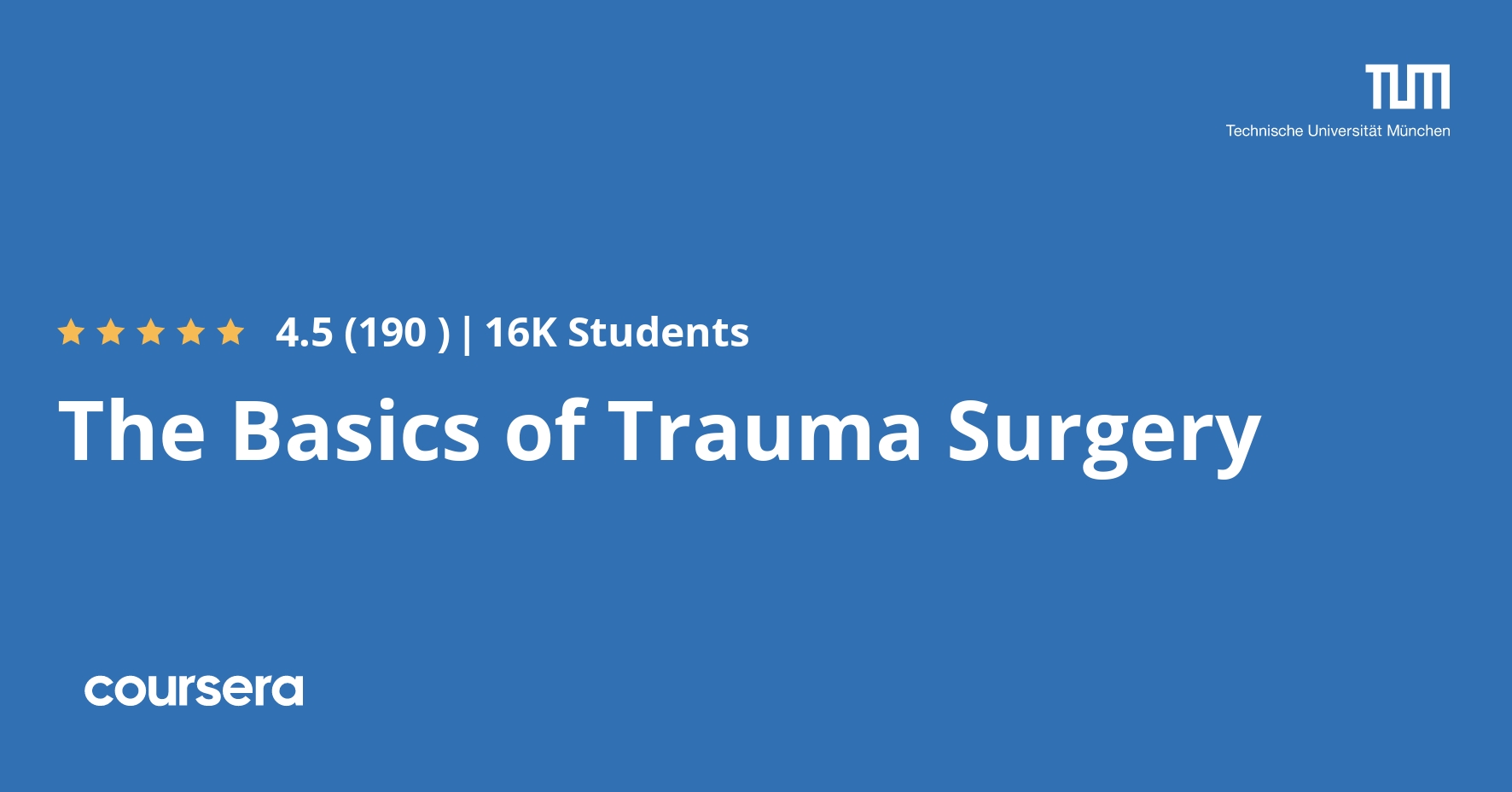Description
This course imparts a wide range of basic knowledge and skills in the field of trauma surgical and orthopedic treatment of patients. To facilitate this, the course employs a new concept of information transfer. We follow a scientific approach and a sophisticated combination of modern teaching methods to vividly impart the taught contents. This included case-based learning, comprehensive factual knowledge, and consecutive quizzes, which help to better memorize the learned contents and later employ them in everyday situations in the field of trauma surgery.
The course participants are introduced to the multi-faceted field of the treatment of trauma patients. Different trauma mechanism and their sequelae are elucidated, as well as the respective gold standard of medical treatment of these injuries by means of modern trauma surgery. All episodes – of which each one is dedicated to a distinct pathology – follow the same approach:
• Introduction and/or repetition of the anatomic principles
• Prelude of the topic by means of a film
• Classification of the treated wound, e.g. according to AO
• Summary of relevant and current therapeutic options
• Each episode is interspersed with short quizzes to immediately recapitulate the learned contents and which will help solving the exam quizzes
The course was compiled by an interdisciplinary team of internationally renowned experts from the special field of orthopedic surgery from Germany. Depending on the respective consultant’s specialization, suitable case scenarios from our clinic are presented.
Dieser Kurs ist auch in deutscher Sprache verfügbar. Für die ursprüngliche, deutsche Version des Kurses besuchen Sie bitte https://www.coursera.org/learn/unfallchirurgie.
What you will learn
Module 1
The first part of this module is attended to familiarize the participants with the management of polytraumatized patients. They will learn about the operational procedure in a trauma room and get to know the ATLS algorithm. This standardized algorithm that is used all over the world is based on the ABCDE scheme that will be explained to you in detail. It is intended to structure complex life-threatening injuries and help you enable the survival of your patient. In the second part of this module, attendees will be introduced to the principles of fracture management. They will not only learn about bone structure and its function, but also acquire knowledge about the classification of fractures. They will get to know the three principles of conservative and operative treatment which are reduction, fixation and rehabilitation. Therefore, particular attention will be paid to the different modes of osteosynthesis. The third part of this module is the introduction to our tutorial regarding the upper extremity. In the third episode, participants will learn about clavicle fractures. First, they will be familiarized with the anatomy of the clavicle and the classification of its fractures. Subsequently, they will get to know the different injury mechanisms, the correct diagnostic investigation and figure out the right mode of therapy. Thereby, the dreaded complication of pseudarthroses will also be elaborated on. The fourth and last episode of this module is about humeral head fractures. First of all, attendees will recapitulate the most important anatomical principles. They will be acquainted with the most common classification according to Neer. The aim is to help them making therapeutical decisions which include non-operative options and operative treatment with plates or prostheses.
Module 2
In our second module, participants will first be taught about humeral shaft fractures. Afterwards, the second part covers the field of elbow fractures. Both videos follow the same order: After learning about the basic anatomical principles, participants will be encouraged to study the epidemiology and classification of the different fractures. They will learn about the right diagnostic investigation and subsequently, they will be familiarized with the indications for different treatment options including both non-operative and surgical alternatives. In the second part of this module regarding the upper extremity, two more bone fractures will be brought closer to the participant: fractures of the distal radius, the most common fracture in human beings, as well as metacarpal fractures. Regarding fractures of the distal radius, participants will first of all repeat the basic anatomical principles. Subsequently, they will learn about the classification of those kinds of fractures, the right diagnostic investigation as well as the non-operative vs. surgical treatment options and the follow-up treatment. In terms of metacarpal fractures, participants will first of all get to know the anatomical principles, particularly the different localizations of fractures, which affect the chosen treatment and other aspects.
Module 3
The first part of this tutorial is about two main pathologies of the hand in traumatology. In the first video, participants will learn about the anatomical principles of the scaphoid bone as well as the epidemiology of its fractures. Subsequently, they will be familiarized with its classification and the particular treatment. The second episode covers ruptures of the extensor tendon in the hand. Just like in the other modules of the Basics of Trauma Surgery, this course starts with an anatomic introduction to the localization, followed by epidemiologic explanations of the state-of-the-art treatment of injuries to this region. In the second part of this module, participants will primarily study fractures of the thoracic and lumbar spine followed by cervical spine injuries. They should envision the anatomy of the spine and the epidemiology as well as the most common injury mechanisms of related fractures. Participants should attach great importance to the clinical-neurological examination. They will be familiarized with both the vertebra model according to Denis and the classification according to Magerl for fractures of the thoracic and lumbar spine as well as a classification for injuries of the upper cervical spine. Different treatment options are presented, e.g. by ventral or dorsal stabilization. The fourth and last video of this module is about pelvic injuries. After explaining the basic anatomical principles and the danger of hemorrhage, participants will be familiarized with the epidemiology and classification of pelvic ring fractures. Furthermore, different treatment options will be highlighted.
Module 4
In this module, participants will learn about fractures of the femur. The first video is about fractures of the proximal femur that can be subdivided into fractures of the head and neck as well as pertrochanteric and subtrochanteric fractures. Especially the blood supply of the proximal femur is a crucial concern in fractures. Different treatment objectives and options are therefore highlighted. The second video continues with fractures of the femoral shaft. Participants will learn about the basic anatomical principles and their consequences for fractures of this area. After getting to know the epidemiology of femoral shaft fractures and their underlying accident mechanism, different options for operative treatment are presented. In the second part of the module, participants will learn about two more main traumatological pathologies of the lower extremity. The third video is about fractures of the ankle joint. After getting to know the basic anatomy and the trauma mechanism, participants should internalize the classification, which is important for the further procedure. In addition, the clinical and radiological examination will be highlighted.





